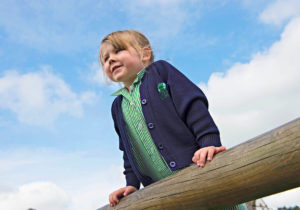Picture the mind as a shaken snow globe, with the contents suddenly scattered and fuzzy. Now liken this to an eight-year-old who might have just been told off, or is excited about being invited to a birthday party, upset about an argument with their friend in the playground or nervous about a test. How would you get that child to concentrate and avoid distraction in class when their mind is occupied with so many other things?
Mindfulness shows children how to gain an awareness of being in the moment rather than trying to control their feelings. With benefits such as increased optimism and attention levels, there is a lot to be gained from introducing mindfulness to the classroom.
Success at The Elms
Personal, Social, Health and Economic Education (PSHEE) lessons have helped our pupils to learn the value of mindfulness. At The Elms, all year groups study the same PSHEE topics, albeit with varying complexity to suit age and developmental needs. This helps us to maintain a whole school focus on key areas, including:
- Healthy Me
- Anti-Bullying
- Celebrating Difference
- Dreams and Goals
- Peer Relationships
Mindfulness practise is threaded through each topic via short meditation exercises that help the children to stay focused and in tune with their feelings. Our pupils also learn about the different areas of the brain and how these affect our ability to focus and make decisions.
After positive feedback from pupils and parents, we have continued to expand on our opportunities to explore mindfulness beyond the classroom. Pupils in Years 5 and 6 can now start the school week with a Monday morning mindfulness session (8.10-8.25am) and our Friday lunchtime sessions (12.30-12.50pm) offer Junior School pupils a chance to relax and reflect before the busy afternoon and weekend ahead.
Tools and Techniques at Home
Mindfulness isn’t just for the classroom! There is a variety of fun, age-appropriate activities that you can incorporate into your child’s daily routine. Here are a few ideas to get you started:
- Sitting with them and practising breathing techniques so they feel like they have a bubble around them.
- Dissecting the classic ‘Goldilocks and the Three Bears’ tale to understand the concept of choice.
- Using ‘feet on the floor, bottom on the chair’ to show them how to settle themselves when anxious.
- Slowly eating a raisin – taking the time to look, examine, touch and taste everything about it and savour the moment.

Find out more about our school Contact Admissions